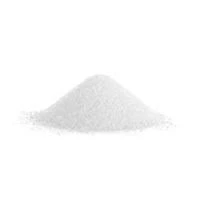
emulsifying agent in food
The Role of Emulsifying Agents in Food
Emulsifying agents, also known as emulsifiers, are vital substances used in the food industry to ensure the stability and texture of various products. They serve as a bridge between two immiscible liquids, such as oil and water, allowing them to mix and remain stable. This article explores the significance of emulsifying agents, their common types, functions, and their impact on food quality and safety.
What are Emulsifying Agents?
Emulsifying agents are compounds that can reduce the surface tension between two liquids, facilitating the formation of an emulsion. Typically, emulsions consist of two phases the dispersed phase (small droplets) and the continuous phase. Without emulsifiers, these phases would separate, leading to undesirable textures and flavors in food products. Emulsifiers can be derived from natural sources, such as egg yolks and soybeans, or they can be synthesized through chemical processes.
Common Types of Emulsifying Agents
Emulsifying agents can be categorized into several types based on their origin and chemical structure
1. Natural Emulsifiers These include lecithin (found in egg yolks and soy), casein (milk protein), and certain polysaccharides like guar gum and xanthan gum. Natural emulsifiers are often preferred for their clean label appeal and additional nutritional benefits.
2. Synthetic Emulsifiers These are man-made compounds, such as mono- and diglycerides, polysorbates, and stearoyl lactylates. While they may not have the same health benefits as natural emulsifiers, they are widely used due to their effectiveness and cost-efficiency.
3. Anionic, Cationic, and Nonionic Emulsifiers Emulsifiers can also be classified based on their electrical charge. Anionic emulsifiers carry a negative charge, which can affect the stability of the emulsion. Cationic emulsifiers have a positive charge, while nonionic emulsifiers do not carry a charge, making them versatile in various pH levels.
Functions of Emulsifying Agents
emulsifying agent in food

Emulsifying agents serve multiple functions in food products
1. Stabilizing Emulsions Their primary role is to stabilize emulsions, preventing the separation of oil and water-based components. This is particularly important in products such as salad dressings, mayonnaise, and sauces.
2. Improving Texture Emulsifiers enhance the mouthfeel and texture of food products, making them creamier or smoother. This is crucial in ice creams, margarine, and spreads.
3. Extending Shelf Life By preventing the separation of ingredients, emulsifiers help maintain the quality and appearance of food products over time. This can lead to longer shelf life and reduced food waste.
4. Facilitating Ingredient Integration Emulsifiers help disperse and integrate other ingredients, such as flavorings, preservatives, and colorings, ensuring a uniform product.
Safety and Regulation
The safety of emulsifying agents has been extensively studied, and many are recognized as safe (GRAS) by regulatory bodies like the FDA. However, some synthetic emulsifiers have sparked debates regarding their long-term health effects. It is essential for consumers to be aware of the ingredients in their food and to choose products that align with their dietary preferences.
Conclusion
Emulsifying agents play an indispensable role in modern food production, contributing to the stability, texture, and overall quality of various products. From natural sources like lecithin to synthetic alternatives, these compounds are key in creating enjoyable and stable food experiences. As consumers become more health-conscious, the demand for clean-label products is increasing, prompting food manufacturers to seek out effective and natural emulsifying agents. Understanding the role and functionality of emulsifiers can help consumers make informed food choices while appreciating the science that goes into their favorite products.
-
Understanding Synthetic Rubber OptionsNewsApr.27,2025
-
Trichloroisocyanuric Acid: Essential for Clean and Safe WaterNewsApr.27,2025
-
Sodium Dichloroisocyanurate: Key to Safe Water TreatmentNewsApr.27,2025
-
Sodium Acid Pyrophosphate: Essential in Modern Food ProcessingNewsApr.27,2025
-
Essential Water Treatment ChemicalsNewsApr.27,2025
-
Denatured Alcohol and Its Industrial UsesNewsApr.27,2025
-
The Versatile Uses of Sodium BicarbonateNewsApr.24,2025
Hebei Tenger Chemical Technology Co., Ltd. focuses on the chemical industry and is committed to the export service of chemical raw materials.
-

view more DiethanolisopropanolamineIn the ever-growing field of chemical solutions, diethanolisopropanolamine (DEIPA) stands out as a versatile and important compound. Due to its unique chemical structure and properties, DEIPA is of interest to various industries including construction, personal care, and agriculture. -

view more TriisopropanolamineTriisopropanolamine (TIPA) alkanol amine substance, is a kind of alcohol amine compound with amino and alcohol hydroxyl, and because of its molecules contains both amino and hydroxyl. -

view more Tetramethyl Thiuram DisulfideTetramethyl thiuram disulfide, also known as TMTD, is a white to light-yellow powder with a distinct sulfur-like odor. It is soluble in organic solvents such as benzene, acetone, and ethyl acetate, making it highly versatile for use in different formulations. TMTD is known for its excellent vulcanization acceleration properties, which makes it a key ingredient in the production of rubber products. Additionally, it acts as an effective fungicide and bactericide, making it valuable in agricultural applications. Its high purity and stability ensure consistent performance, making it a preferred choice for manufacturers across various industries.











